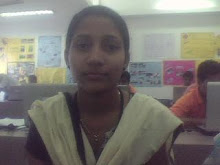Village study of Inam Veerapur
Introduction
On 11th feb 2009, A group of four members in each group formed for village study. We were four members( Chandrashekhar, Basavaraj, Usha and Latha) in our team. All fellows left Gram Chethana and walked for 2km to reach soorashettykoppa to catch bus, but bus was left early on that day again we start walking for more than 6km to reach Innam veerapur.
I never walked for such a long distance, before reaching village I was tired and I thought how I can work whole day. We met Mr.Shetteppa Navi, who is a Sustainable Agriculture Promoter of AME foundation and Other members of Basaveshwar Susthir Krishi Sangha have welcome with pleasing manner and offered tea for us. He introduced other farmers to us we interacted with them and told our purpose of being there. Other groups went to their respective villages from our village. Members of BSK sangha have introduced about types of compost for land like Nadaap Compost and vermi compost, Azolla farming as food for animals.
About Inam Veerapur
Freedom fighter stayed in that village and during British period they used to give Prize in the form of Garlic. Inam veeapur is a small village consist of 515 people population and 17Km away from Hubli and majority of the people depended on Agriculture.
During Transect Walk:
We planned to go for Transect walk, first our team members divided to collect information separately on different issues like Health, Agriculture, Demographic, Infrastructure and natural resources details during Transect walk.
First we visited to Anganwadi center to collect basic Demographic and health and education details of that village, we couldn’t visit Village Panchayat because for four villages one panchayat in Belagali.
Demographic Details:
· Population-521
· Temples -4
· School-1
· Water tank-9
· Youth group-1
· Continue education center-1
· ANM-2
· Library-1
· Stree Shakthi sangha -3
And also we got information that all villagers are healthy, from past they are not affected by any dreadful diseases. TB patient was found last 2yrs back. Even chkunkunya it was affected through Karnataka, Only 2patient were suffered from that disease.
During Social Mapping
To build initial rapport with people, we got support of AME foundation. Those who are undergoing training in AME foundation gathered with us. For social mapping we used Sheets to draw mapping, in this mapping they identified Schools, Tanks, Temples, Street name and other foundation/Ngo’s.
Resource Mapping
We have done mapping of Agriculture land resource of inam veerapur, after observing the demographic details most of the people are depended on Agriculture so we planned to do on Agriculture.
· Total Land-971.17
· Cultivated land-907.20
· Crops-Jawar, Maize, Soya, Sapota, and Guava.
· Soil –Red and Black
· Water facilities
As a part of Transect Walk, we visited to Agricultural land most of the farmers using Waste water of KMC and Hospital waste of hubli to grow crops.
Major Observation:
Adopted Self-sustaining farming system, PHC were not there. Utilization of waste water for cultivation land, Individual Hygiene is lacking in villagers, Open deification is not a major problem for villagers, Comfort with their earnings by cultivation, Government projects was not initiate and Importance of Indigenous technology.
Learning’s:
If we want to do PRA activity, we have to see the villagers convince timings.
Usage of PRA tools in collecting the information from villagers
 Creativity
Creativity 